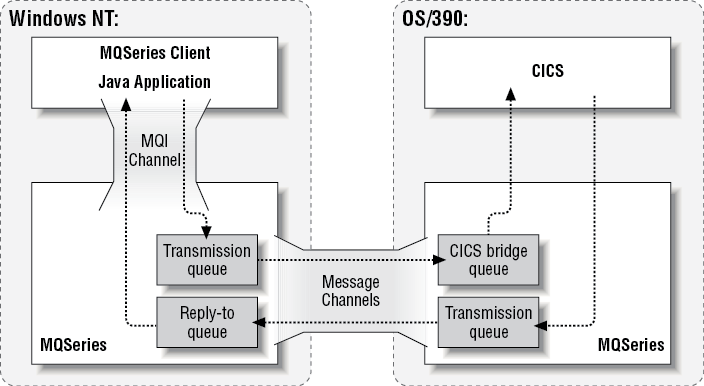An MQSeries client is part of an MQSeries product that can be installed on a machine without installing the full queue manager. It is possible to have only an MQSeries client on the machine from which the Java head office application is to run and have all the MQSeries objects that are used defined on the Windows NT server’s queue manager. There are advantages and disadvantages to this which are discussed in detail in MQSeries documentation.
We have chosen to have a queue manager set up on our Windows NT Java machine to improve the robustness of the application should the link to the OS/390 machine be unavailable for any reason. The additional queue manager allows messages to be kept until such times as the channel to the queue manager on the OS/390 machine is available. This is referred to as assured delivery. It ensures that the message is received when the channel connecting the queue managers is available and is sent once and once only.
Whichever of the two methods described is used, there are two changes to the Java application that are necessary. They are the libraries used at link-edit time and the channel definitions; see Figure 14-4.
The Java application, in our case, uses an MQI channel to send and receive messages to and from the local queue manager on the Windows NT workstation.
The queue that it is sending messages to is actually defined to the OS/390 queue manager. Messages are sent over a message channel. Reply messages created by the MQSeries-CICS DPL bridge are sent to the reply-to queue on Windows NT queue manager by means of a separate message channel. Separate message channels are required to send and receive messages between queue managers, as message channels only have the ability to send MQSeries messages in one direction.
To process the MQSeries message sent from the Java application and link to/run the CICS program NACT02, we make use of the MQSeries-CICS DPL bridge.
